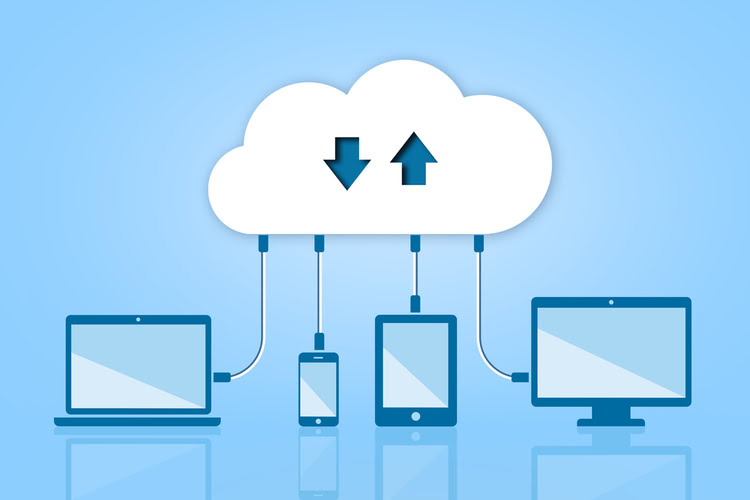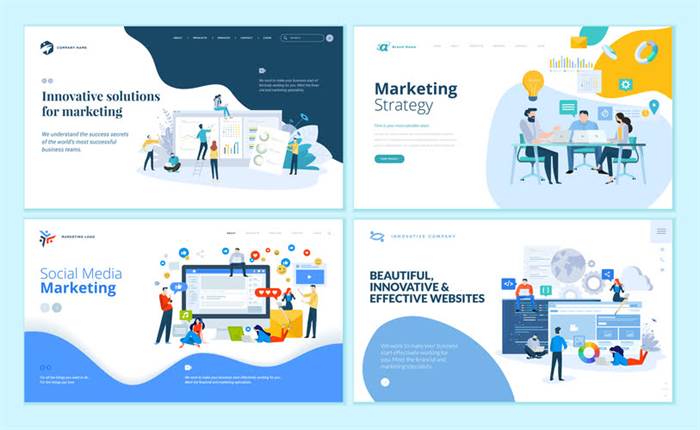8 min learn – By utilizing AI in your talent acquisition course of, you’ll find a way to scale back time-to-hire, enhance candidate quality, and improve inclusion and diversity. We construct unstoppable groups by equipping DevOps professionals with the platform, tools and training they want to make release days out of date. That’s probably a think about why, according to Gartner, at least 65% of organizations will implement a Hybrid Integration Platform (HIP) by 2022. But what precisely is a Hybrid Integration Platform, and the way can it improve efficiencies in your systems? If your goal market is mid-market, or enterprise, the great nature of a HIP, like DCKAP Integrator, could additionally be best for you. Most offer a easy drag-and-drop performance that requires minimal programming information to operate.
- There’s also the very fact a hybrid cloud system is more modern, that means enterprises get an opportunity to future-proof their systems.
- As for the hybrid integration architecture, now that we established what hybrid cloud “consists” of, it’s easy to see that when it comes to hybrid integration, it’s principally the identical concept.
- Before you can start optimizing your hybrid strategy, you have to take the time to create it.
- Once related, you presumably can hold information in sync across applications and implement end-to-end automations.
- To modernize all that content material and bring it together underneath a single banner, you want a solution that gives nice file transfer administration options.
Some items that aren’t on this list could be unmissable for you relying on your supposed use cases, during which occasion you have to add these to your standards too. Finally, and most importantly for many enterprises, hybrid integration supports an advanced and frictionless expertise for patrons and companions. With a modular IT infrastructure, new technologies are easily carried out to elevate the shopper expertise, which in flip builds loyalty and stickiness, protecting and advancing market share and profitability. A hybrid integration platform brings these methods collectively, facilitating the transfer of information, whereas resolving challenges such as scalability, information exposure, and unauthorized entry. Essentially, a Hybrid Integration Platform makes use of these four dimensions to provide the options you should integrate information and applications throughout your on-premises and cloud environments. Adeptia is a strong Hybrid Integration Platform that can help optimize your business processes and improve knowledge integration.
Crosser For Google Cloud
Hybrid cloud storage solutions, for example, are made up of a number of cloud-based infrastructures, put collectively to permit them to optimally help your storage needs. Your FLC (full life cycle) needs to be manageable within your hybrid integration platform. That’s as a outcome of your platform is ideally going to be helpful to you all through each step of the mixing and implementation process. If it doesn’t cover the complete life cycle, you can’t handle every of those steps equally effectively. Ideally, you’ll be looking for a platform with safe file switch management that’s suitable with every app and location you have to transfer information from.

On the opposite hand, iPaaS is inherently designed to facilitate seamless connections between various cloud companies. It provides a plethora of connectors for well-liked cloud platforms, guaranteeing that companies can shortly and effectively integrate various cloud options. Its cloud-native structure implies that iPaaS is inherently outfitted to deal with the nuances and dynamism of cloud ecosystems making it a protected selection for businesses that are absolutely dedicated to a cloud-first strategy. Not to mention, as the big information needs driven by digital transformation proceed to evolve, the hybrid cloud setting must repeatedly adapt.
Industrial Connectivity
As a result, the knowledge expertise world is present process an enormous shift, paving way for a serious change in IT in addition to the necessity for a new structure. The platform with its intuitive interface can suit both skilled developers and users with little technical abilities, permitting them to support varied use instances. OpenLegacy, for instance, provides a easy three-step process for onboarding that offers you an entire overview of the issues you have to know to use the platform to its full potential. One space the place you’ll wish to look for this assist is through the onboarding course of. You have to know you’ll be onboarded quickly and easily and given every little thing you have to succeed with your new tool.
In the context of a HIP, API administration often leans in the path of a extra versatile approach, accommodating both legacy techniques and newer cloud-based purposes. This means that companies can manage APIs which are hosted on-premises and in the cloud in a cohesive integration technique. Unlike Software as a Service (SaaS), which is delivered over the web, an iPaaS is a cloud-based integration answer. Considered a low-code remedy for knowledge integration, an iPaaS is an API-driven solution to create and handle connections between multiple SaaS methods and cloud purposes.
Hybrid integration platforms make this simpler, and the best ones guarantee it’s seamless. Lastly, enterprise integration instruments for hybrid cloud ecosystems are typically very versatile. A cloud-based resolution could be custom-made more simply than an on-premise-based one. This gives enterprises the room they need to adjust instruments to their particular wants. Most corporations depend on hybrid integration to connect cloud and on-premises platforms, two opposing expertise fashions that do not integrate intuitively. For example, on-premises software is put in and runs on a company’s inner hardware infrastructure, while cloud software is stored and managed on non-public or public servers in the cloud.
Hybrid Integration Platforms (HIP) bridge the gap between different purposes, software program, and providers to ensure seamless connectivity and efficient data administration. These platforms play a crucial function in modern businesses by streamlining workflows, making information readily accessible for informed decision-making, and simplifying application improvement and deployment. DCKAP Integrator is an integration solution constructed specifically maintaining distributors in mind. The software acts as a single platform for integrating multiple software functions.

An integration governance characteristic ensures HIP integrations adhere to an existing architecture. The structure of a Hybrid Integration Platform allows data to reside in the cloud or inside a business’s private infrastructure. It has been designed to handle various and complex knowledge sources, whether they’re IoT devices, legacy methods, or cloud-based providers. A Hybrid Integration Platform (HIP) is a solution to connect applications, information, and workflows over a number of techniques throughout on-premises (physical) and cloud-based (digital) environments.
Evolution Of Integration Systems
MuleSoft’s Anypoint Platform provides a robust ESB and iPaaS platform, not simply a toolkit. By presenting a unified platform, Anypoint Platform simplifies the consumer experience, each on-premises, cloud. MuleSoft allows over 1,600 organizations in more than 60 nations to build utility networks that improve the clock velocity of business. Crosser designs and develops a hybrid-first Streaming Analytics & Integration software for any Cloud, On-premise or Edge. The Crosser Platform permits real-time processing of streaming, event-driven or batch knowledge for Intelligent Pipelines & Automations and for Industrial IoT. All managed from a single Control Center and powered by a low-code and low-effort experience.

A HIP is what’s generally known as an integration platform as a service, or iPaaS, the performance of which is made out there as a cloud-based platform. However, a traditional iPaaS sometimes only handles plug-and-play integrations between SaaS functions. By comparability, a Hybrid Integration Platform can join tons of of purposes, including your on-premises enterprise software program. Understanding the progression of integration systems is essential to appreciating the importance of Hybrid Integration Platforms. In the past, organizations primarily relied on manual, point-to-point connections between systems, which proved to be time-consuming and error-prone.
Hybrid integration platforms supply powerful instruments for seamless information integration throughout on-premise and cloud-based applications. With HIPs, organizations can make sense of the data they generate or process and derive actionable enterprise insights that improve efficiencies. These options enable larger reach of knowledge sharing as well as business processing guidelines and application logic. IPaaS (Integration Platform as a Service) connects applications and data sources for seamless information change. CPaaS (Communication Platform as a Service) focuses on integrating real-time communication tools like messaging and voice companies into purposes. While iPaaS manages knowledge flow, CPaaS enhances communication capabilities, typically used for customer engagement and collaboration inside applications.
Taken together, the employee expertise should improve by leaps and bounds, which should also benefit your group within the type of improved retention, productivity features, and even larger income. In the absence of integration, your employees are pressured to hop between purposes simply to reenter information. This isn’t solely tedious and unsightly to perform but can even lead to consequential mistakes, from invoicing shoppers the wrong amount to provisioning the inaccurate set of apps for brand new hires. A message gets posted to a particular channel in Slack that has all the project’s stakeholders. This message can embrace important objects and information associated to the task, similar to any attachments, the task’s ID, title, stage of significance, etc.

Do you keep in mind the “good old days” of IT, when an entire enterprise could run on a single LAN, with all their business-critical functions and infrastructure hosted in a closet down the hall? Now, the hundreds of systems, knowledge sources, and platforms most organizations depend on are dispersed all through the world. Getting all these systems to communicate and work collectively is crucial to achieving what is a hybrid integration platform digital transformation. Its power lies in its capacity to connect with each legacy enterprise systems and newer cloud-based platforms. For occasion, a business utilizing a standard ERP system alongside a modern cloud-based CRM would find HIP advantageous. The platform ensures that information and processes circulate seamlessly between these systems.
Modernizing these legacy methods and middleware is necessary, but it does come with its fair share of challenges. Hybrid integration platforms reduce the amount of growth time wanted to get applications to work together https://www.globalcloudteam.com/. With time-saving practices such as low-code and drag-and-drop capabilities, less time-consuming growth, permitting builders and architects to give attention to digital transformation initiatives versus piecemeal coding duties.

Such a method permits, on the one hand, to take care of delicate information inside a company and, then again, to benefit from as many applied sciences as possible. Ingest, Integrate and Transform your information with the next-gen ETL and ELT solution. These kinds of solutions handle APIs, but their integration tooling adds middleware.
Yet some knowledge have to remain “on the bottom”, whether due to regulatory or information protection requirements, or just being business-critical data remnants in not-yet-updated systems. Hybrid integration solves the issue of taking current info from on-premises methods. It leverages new techniques to make way for innovation, aggressive advantage, and driving new business models. The up to date enterprise deals with emerging developments out there, while leveraging the info and performance of on-premises legacy purposes.
